Electric dirt bikes are no longer a novelty; they’re rapidly evolving into serious contenders in the motocross and off-road scene. For riders who are open-minded and seeking a blend of performance and innovation, the electric revolution is here. The team at Dirt First Racing has taken notice and crafted a custom electric KTM supermini that’s turning heads and challenging perceptions. This isn’t just a scaled-down electric motorcycle; it’s a performance machine built to thrill. We got a chance to put this custom build to the test and were genuinely surprised by the experience.
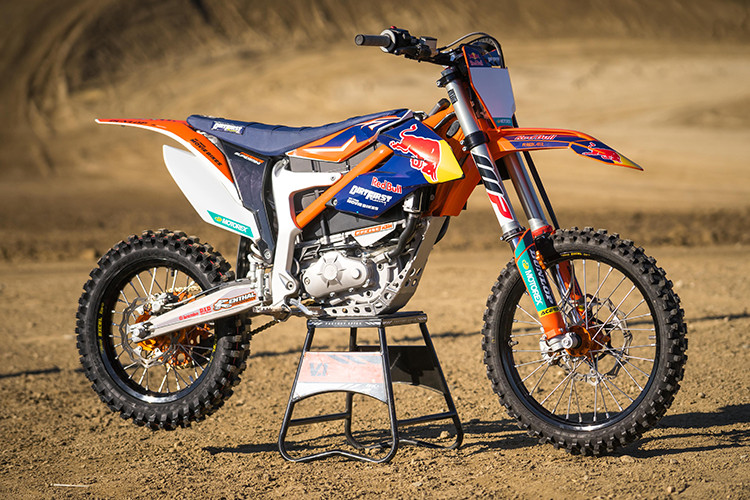
Image alt text: Dirt First Racing’s custom electric KTM supermini dirt bike on a track, showcasing its aggressive stance and electric powertrain.
Initially, the absence of a clutch lever and shifter on this Electric Dirt Bike Ktm felt foreign. Reaching for controls that weren’t there became a recurring habit in the first few laps. However, this initial unfamiliarity quickly transformed into an unexpected advantage. Riding without a clutch and shifter translated to enhanced control and grip. With all fingers secured around the handlebar grip, there was a heightened sense of security, especially in demanding riding situations. Furthermore, simplifying the controls allowed for more mental bandwidth to focus on line selection and throttle input.
Another standout feature of this electric dirt bike KTM was its remarkably light feel while in motion. Despite a listed weight of around 230 lbs with a full battery, it defied expectations on the track. The reduced inertia, thanks to fewer internal engine components, made the bike feel significantly lighter than its actual weight. This agility became apparent when maneuvering through the air. Correcting mid-air adjustments on jumps and navigating sideways landings felt effortless. This lightweight sensation is a boon, particularly for lighter riders, offering a level of maneuverability that traditional gas-powered dirt bikes often can’t match.
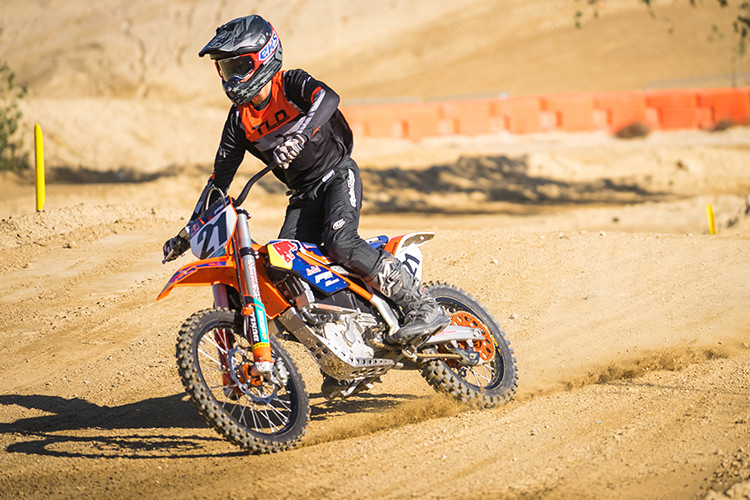
Image alt text: Rider on the electric KTM supermini executing a turn on a dirt track, demonstrating the bike’s handling and agility.
The power delivery of this electric dirt bike KTM is a departure from the explosive nature of a supermini with a combustion engine. It requires a slightly different riding style, necessitating earlier acceleration to maintain momentum, especially due to the initial absence of that familiar “bottom end” punch. However, this smooth, linear power delivery presents its own set of advantages. The lack of an abrupt power surge at the throttle allows for more aggressive throttle inputs while cornering without unsettling the chassis. This seamless transition from closed to wide-open throttle enhances traction and makes tackling challenging terrains, like steep inclines and jumps out of corners, remarkably smooth and controlled.
While the electric dirt bike KTM might not deliver the sensation of raw, neck-snapping speed initially, its actual pace is deceptively quick. The near-silent operation, combined with the consistent, tractable power, creates a unique riding experience. The bike propels forward with surprising speed, maintaining traction and momentum in a way that sometimes masks the true velocity.
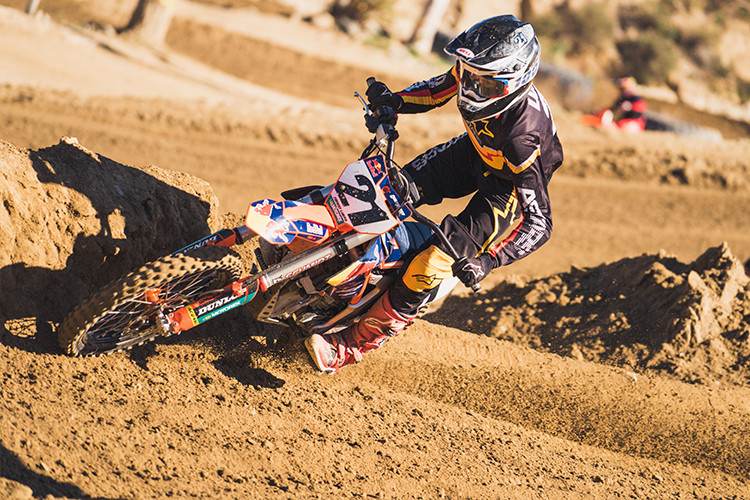
Image alt text: Close-up of the electric KTM supermini’s front wheel and suspension as it navigates a jump on a motocross track.
Battery runtime is a crucial factor for any electric dirt bike. In the case of this electric dirt bike KTM supermini, it provides a solid 25-30 minutes of riding at a competitive pace. During testing, a professional off-road racer pushed the bike for a continuous 24-minute moto on a demanding track before the low-power warning initiated. Dirt First Racing’s tests with younger, fast mini riders have even shown runtimes extending to approximately 29 minutes before the bike enters its battery preservation mode. This duration is ample for most motocross motos and trail rides, especially considering the quick battery swap capability.
The ergonomics of the cockpit, particularly the footpeg placement, sparked some mixed opinions. The footpegs are positioned further back and lower compared to standard bikes. While this is a known characteristic of the base Freeride E-XC model, it becomes more pronounced on a supermini scale.
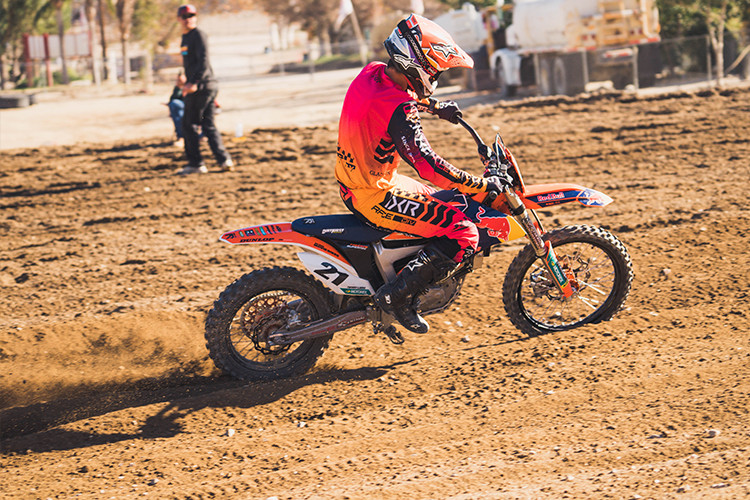
Image alt text: Side view of the electric KTM supermini highlighting the frame, electric motor, and rider’s leg positioning on the footpegs.
However, for some riders, this footpeg depth turned into an unexpected advantage. For a 5’5″ rider who typically struggles to grip a standard gas-powered supermini effectively with their legs, the electric dirt bike KTM offered improved control. The deeper footpeg position allowed for gripping the bike with the knees and thighs, leading to a greater sense of connection and control, particularly in rough track sections. Additionally, Dirt First Racing addressed the hand brake lever, a less favored feature by some, by installing a rear brake pedal. This modification was highly appreciated by riders accustomed to traditional rear brake setups.
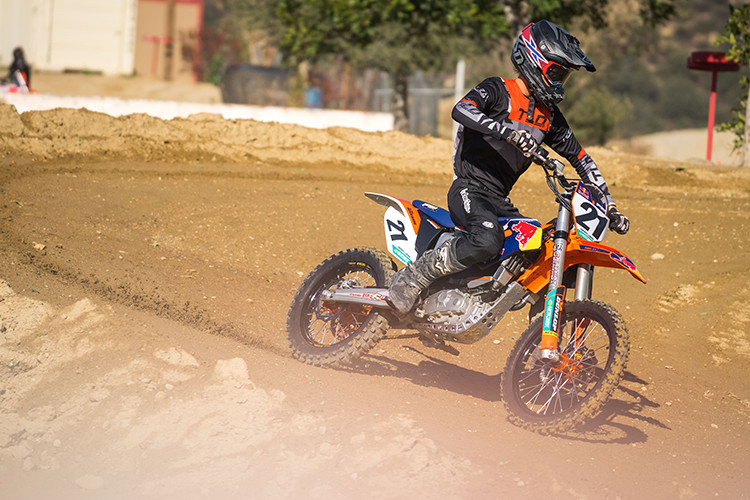
Image alt text: Detail shot of the electric KTM supermini’s handlebars, showcasing the absence of a clutch lever and the standard brake controls.
One minor drawback identified was the increased effort required to push the electric dirt bike KTM when unpowered. The absence of a neutral gear, typical in electric motors, means there’s always some level of resistance. This could pose a challenge in off-road environments where maneuvering the bike without power becomes necessary. However, the smooth and controllable power delivery of the electric motor could also be an advantage in such situations, potentially making it easier to power out of tricky spots and avoid getting stuck in the first place.
A significant advantage of electric dirt bikes, including this electric dirt bike KTM, is their drastically reduced maintenance demands. The common maintenance tasks associated with gas-powered bikes, such as oil changes, air filter replacements, piston and clutch maintenance, are virtually eliminated. The KTM Freeride platform, which this supermini is based on, features a user-friendly removable battery system. With two people, battery swaps can be accomplished in as little as 30 seconds, minimizing downtime.
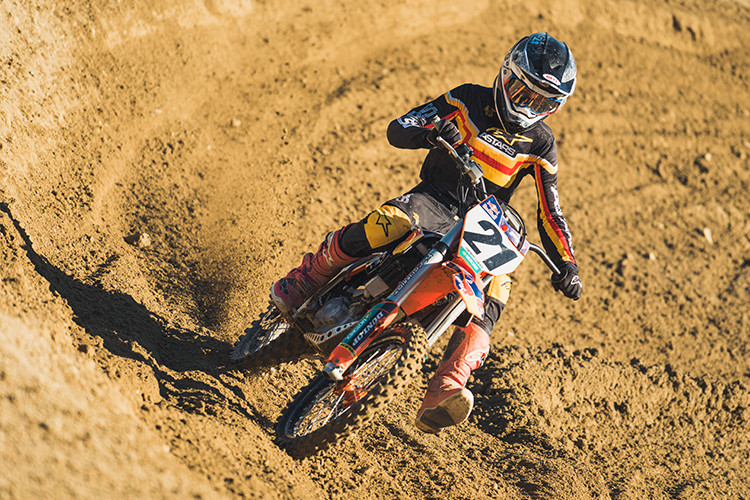
Image alt text: Rider on the electric KTM supermini airborne during a jump, emphasizing the bike’s lightweight feel and maneuverability.
The price point of the Dirt First Racing electric dirt bike KTM Supermini is a significant consideration. With a retail price starting at $17,995, plus taxes and fees, it represents a substantial investment. Spare batteries, costing upwards of $4,000 each, further add to the initial expense. However, it’s crucial to consider the long-term cost savings. Eliminating the need for gasoline, engine oil, clutches, and top-end rebuilds can offset the initial cost over time. Furthermore, the time saved on maintenance translates to more riding time and less garage time.
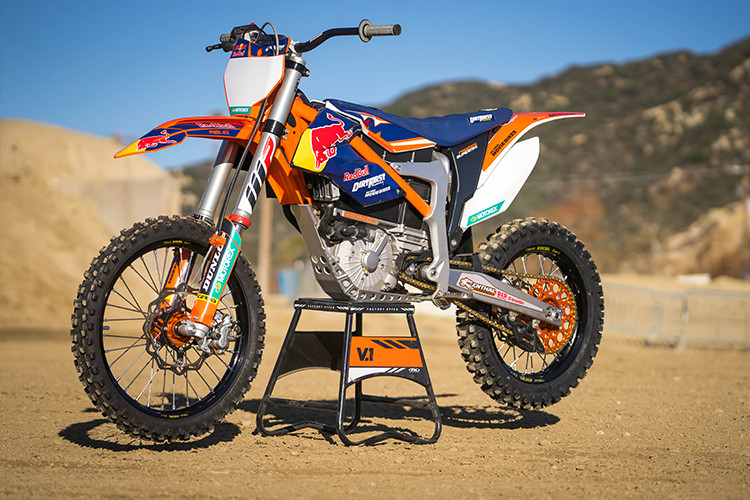
Image alt text: The Dirt First Racing team showcasing the electric KTM supermini in a garage setting, highlighting its custom build and electric components.
The versatility of the electric dirt bike KTM extends beyond just performance. Its operational limitations are actually advantages in many scenarios. The adjustable power modes allow for tailoring the bike’s output to suit various rider skill levels. Beginner riders can utilize lower power modes for safe and comfortable learning, while experienced riders can unleash the full potential for aggressive riding on demanding tracks. The near-silent operation opens up riding possibilities in noise-sensitive areas, such as backyards, neighborhoods, and practice areas where noise restrictions are in place.
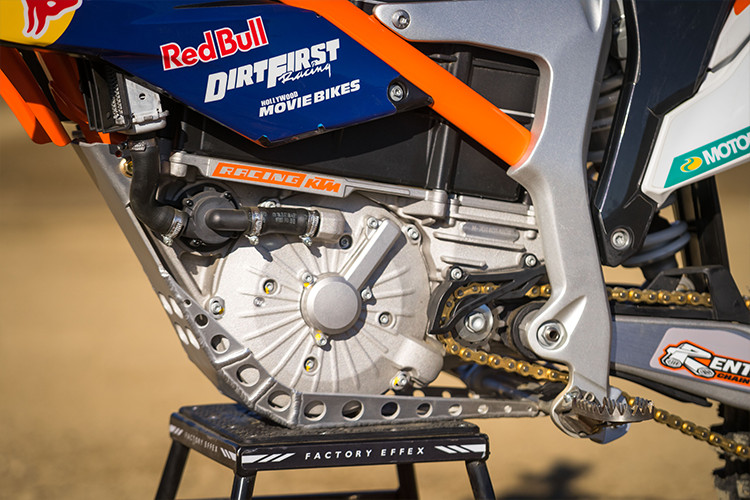
Image alt text: Electric KTM supermini parked in a residential area, emphasizing its quiet operation and potential for riding in noise-restricted zones.
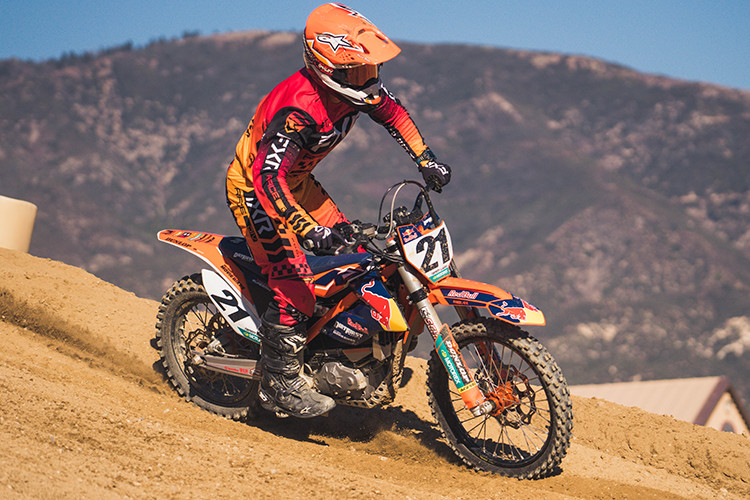
Image alt text: Rider confidently leaning into a corner on the electric KTM supermini, demonstrating its smooth power delivery and traction.
In conclusion, electric dirt bikes are rapidly closing the performance gap with their gas-powered counterparts. The Dirt First Racing electric dirt bike KTM Supermini demonstrates the immense potential of electric technology in off-road motorcycling. With the right rider and dedicated support, these electric machines are not just competitive; they are poised to become serious contenders in the future of dirt bike racing and recreational riding. The success of young racers like Katin, consistently challenging and even outperforming gas-powered bikes in mini ranks, underscores this evolving landscape and the exciting future of electric dirt bikes.
